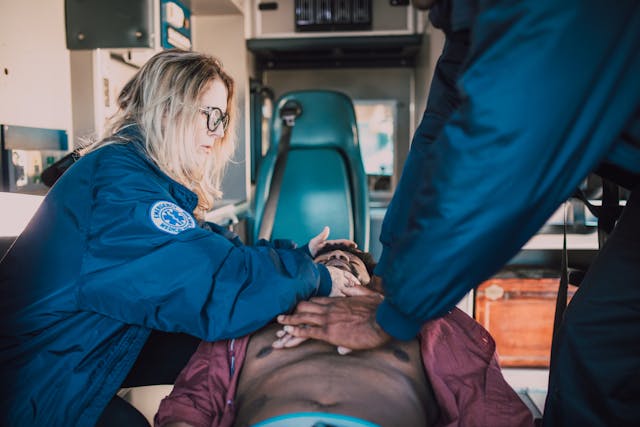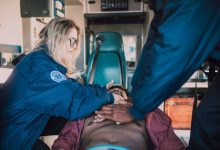
In this increasingly unpredictable world, where emergencies can strike unexpectedly, possessing a robust understanding of Basic Life Support (BLS) is crucial. BLS encompasses fundamental skills designed to sustain life and stabilize individuals in critical situations until professional medical assistance arrives. Whether you’re a healthcare provider, a concerned citizen, or simply someone eager to be prepared for emergencies, familiarity with BLS is invaluable.
Grasping Basic Life Support
Basic Life Support, often abbreviated as BLS, comprises a vital set of skills essential for emergency situations. These skills are not restricted to healthcare professionals; they are designed for anyone willing to step up and provide assistance when needed. The core principles of BLS involve recognizing emergencies, activating emergency response systems promptly, performing cardiopulmonary resuscitation (CPR), using automated external defibrillators (AEDs), and addressing incidents of choking. Mastering these techniques enables individuals to render immediate aid and enhance the likelihood of survival for those facing life-threatening medical crises.
The Significance of Swift Action
During emergencies, time is of the essence. Taking prompt action can often mean the difference between life and death. Recognizing signs of cardiac arrest, such as sudden collapse and abnormal breathing patterns, prompts individuals to initiate emergency response systems without delay. This initiates a vital chain of survival, ensuring timely medical intervention and potentially improving patient outcomes. Individuals trained in BLS can confidently administer CPR and use AEDs, significantly boosting survival rates until professional medical personnel arrive on the scene.
Core Elements of Basic Life Support
At the heart of BLS lie several core elements that equip individuals with the skills necessary to intervene effectively during emergencies. CPR involves chest compressions and rescue breaths, aimed at maintaining blood circulation and oxygenation in cases of cardiac arrest. AEDs are portable devices that deliver electric shocks to restore normal heart rhythms, crucial in sudden cardiac arrest situations. Furthermore, BLS training encompasses techniques for clearing airway obstructions and facilitating normal breathing in cases of choking. Together, these components empower individuals to take decisive action and provide immediate assistance in life-threatening emergencies.
Learning and Proficiency in BLS Skills
BLS training courses are widely available, catering to a diverse audience ranging from healthcare professionals to everyday citizens seeking BLS certification. These courses offer comprehensive instruction and practical hands-on practice in CPR, AED utilization, and choking relief techniques. Participants engage in simulated scenarios and practical assessments, enhancing confidence and proficiency in executing critical BLS interventions. Online resources complement traditional classroom settings, providing convenient access to instructional materials and supporting continuous skill development. Regular updates and refresher courses further bolster retention and readiness, ensuring individuals remain well-prepared to respond effectively during emergencies.
Empowerment Through Preparedness
Embracing BLS transcends merely acquiring technical skills; it embodies a commitment to readiness and empowerment. By mastering BLS techniques, individuals become proactive responders capable of making a positive impact during crises. This readiness fosters resilience within communities, promoting safety and well-being across diverse settings. As advocates for health and safety, those trained in BLS contribute to a culture of preparedness, inspiring others to prioritize life-saving skills and collectively build a stronger, more responsive society.
Ensuring Readiness Across Diverse Settings
Preparing for emergencies with Basic Life Support proficiency spans various environments and scenarios, empowering individuals to act decisively and effectively whenever and wherever help is needed most. Whether in bustling urban centers, remote rural communities, or recreational settings, the ability to apply BLS principles ensures readiness to address cardiac arrests, choking incidents, and other life-threatening emergencies. This readiness not only enhances personal preparedness but also contributes to a safer, more resilient society overall, where individuals are equipped with the skills and confidence to make a critical difference in times of crisis.
Conclusion:
In conclusion, Basic Life Support serves as a cornerstone of emergency preparedness and community resilience. By comprehending its principles and mastering its techniques, individuals equip themselves to act swiftly and effectively in critical situations. Whether in healthcare settings, public spaces, or everyday environments, the ability to provide immediate assistance through BLS can make a profound difference in saving lives and ensuring better outcomes for those in need. Embracing BLS is not merely about learning skills; it embodies a commitment to compassion, readiness, and the preservation of life—a commitment that empowers individuals to make a lasting impact in their communities and beyond.





